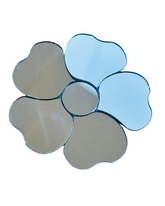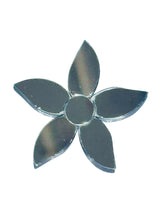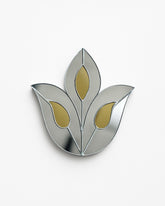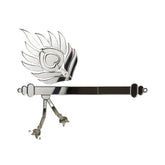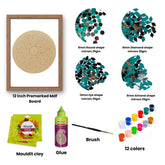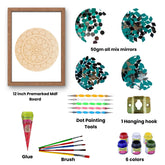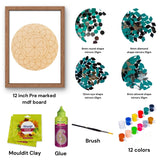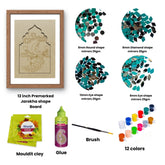The Role of Mirrors in Traditional Art: A Focus on Lippan Mirror Work
Traditional art forms have always carried a deep cultural significance, often reflecting the history, beliefs, and values of a community. One such vibrant and intricate form of traditional art is Lippan Mirror Work. This art form, deeply rooted in the Indian subcontinent, uses mirrors as a central medium of decoration, creating mesmerizing and reflective designs that add both beauty and spirituality to homes and places of worship. This blog will explore the role of mirrors in traditional art, specifically focusing on Lippan Mirror Work, its techniques, significance, and contemporary uses.
-
Spiritual Significance:
Mirrors in Lippan art are believed to have spiritual and metaphysical importance. It is thought that mirrors reflect positive energy and help in creating a divine atmosphere. In temples and homes, mirrors symbolize the reflection of light and truth, symbolizing purity and enlightenment. The idea behind using mirrors in Lippan art is to bring good fortune, prosperity, and divine blessings to the household or sacred space. -
Visual Appeal:
Mirrors are used to enhance the aesthetic quality of Lippan art. The reflective nature of mirrors creates an optical illusion, making the artwork seem more vibrant and dynamic. The way light bounces off the mirrors creates a stunning visual effect, especially when sunlight or artificial lighting interacts with the artwork. -
Cultural Expression:
Lippan Mirror Work is not just about decoration; it is also a reflection of Indian culture and heritage. The intricate mirror work designs often represent regional motifs like flowers, peacocks, elephants, and other spiritual symbols. These motifs are not only artistic but hold symbolic meaning, representing prosperity, fertility, and protection.
The Process of Creating Lippan Mirror Work
Creating Lippan Mirror Work is a highly skilled and meticulous process. The art form involves several steps that require both patience and precision. Here's how it's done:
1. Base Preparation:
The first step involves preparing the base on which the artwork will be created. This is usually a wall or a wooden board, and sometimes, a pre-marked MDF board is used. The surface is cleaned and smoothed to ensure that the clay sticks properly.
2. Clay Application:
The artists apply a thick layer of clay, which is often mixed with natural colors like yellow, red, and green. This clay layer forms the base structure of the artwork. The artist shapes the clay into different patterns, such as spirals, floral designs, and geometric shapes, creating intricate textures and designs.
3. Mirror Placement:
The mirrors are placed on top of the dried clay in specific areas to create a contrast. Small mirror pieces or mirror tiles are typically used, and they are carefully embedded into the clay design. The arrangement of these mirrors is key to the overall aesthetic appeal. The mirrors are arranged in a way that they reflect light in various directions, enhancing the visual depth of the artwork.
4. Finishing Touches:
Once the mirrors are fixed, the design is further detailed using colored clay, enhancing the contrast between the reflective surfaces and the background. The artwork is then allowed to dry completely before the final touches are applied. The final work is often sealed with a layer of varnish or lacquer to protect it from dust and moisture.
Types of Mirrors Used in Lippan Art
Mirrors used in Lippan art come in various shapes and sizes, and each type plays a different role in enhancing the artwork. Here are some popular types:
-
Round Mirrors:
Round mirrors are often used to create symmetry in Lippan art. They are placed in the center of floral patterns, representing the sun, moon, or divine symbols. -
Square Mirrors:
Square mirrors are used for geometric designs. They add a modern twist to the otherwise traditional Lippan art. Square mirrors are often used in Mandala-style designs to enhance their intricacy. -
Fancy Shaped Mirrors:
Mirrors in the shape of hearts, stars, flowers, and peacocks are common in Lippan art. These fancy-shaped mirrors often carry symbolic meanings and are placed strategically to accentuate certain parts of the artwork. -
Acrylic Mirrors:
In contemporary Lippan art, acrylic mirrors are increasingly being used. They are lightweight, easy to handle, and come in various sizes and colors, making them ideal for modern Lippan artwork while maintaining traditional charm.
Modern Applications of Lippan Mirror Work
Lippan Mirror Work is not just limited to traditional settings; it has evolved and found a place in modern interiors. Here’s how the art form is being used today:
-
Home Décor:
Lippan mirror work can be seen on accent walls, wall hangings, and decorative pieces in homes. The reflective nature of the mirrors adds a contemporary touch to the otherwise traditional design, making it perfect for modern homes. -
Mandir and Temple Decorations:
Lippan Mirror Work remains a popular choice for decorating mandirs (temples) and spiritual spaces. The mirrors are used to enhance the spiritual experience by reflecting divine light and creating an uplifting atmosphere. -
Event Décor:
Lippan art, especially with mirrors, is often used for weddings, festivals, and special events. The reflective nature of mirrors adds an element of elegance and luxury to the décor, creating a more vibrant and festive atmosphere. -
Wall Art and Murals:
Large-scale Lippan mirror murals are now being created to adorn walls in both residential and commercial spaces. The reflective nature of the mirrors adds a touch of sophistication and uniqueness to any room.
Why Choose Lippan Mirror Work for Your Decor?
If you're looking to add a touch of tradition mixed with modern elegance to your space, Lippan Mirror Work is an excellent choice. Here are some reasons to consider it:
-
Timeless Aesthetic:
The combination of mirrors and clay gives a timeless appeal to the art, making it suitable for both traditional and contemporary settings. -
Reflects Positive Energy:
The spiritual significance of mirrors in Lippan art makes it a great addition to any home, particularly for people who believe in the power of positive energy. -
Eco-friendly:
Lippan art is made from natural materials like clay and mirrors, making it an eco-friendly decoration option for those looking for sustainable home décor solutions.
Conclusion
The use of mirrors in Lippan art plays a crucial role in both its spiritual significance and its visual appeal. This traditional art form, with its roots deeply embedded in the culture and heritage of Gujarat, has now evolved into a modern décor trend. Whether you're decorating your home, mandir, or event space, Lippan Mirror Work offers an exquisite and meaningful way to enhance any setting.
By blending traditional techniques with contemporary design elements, Lippan Mirror Art continues to captivate art lovers and decorators alike. As it gains more recognition globally, its role in the world of art and craft is poised to grow, bridging the gap between tradition and innovation.










